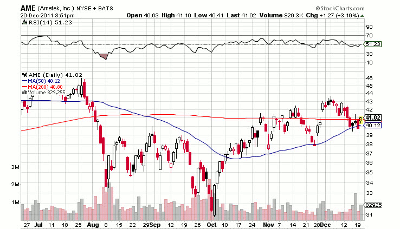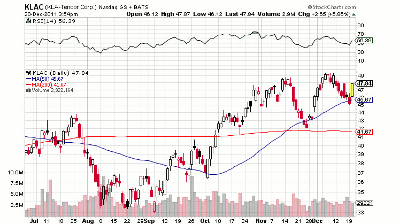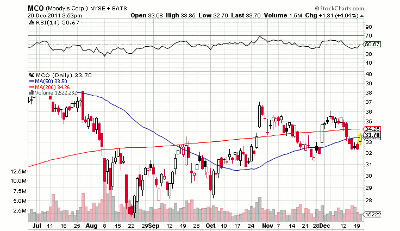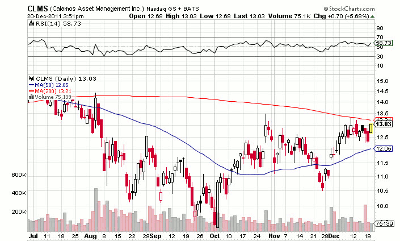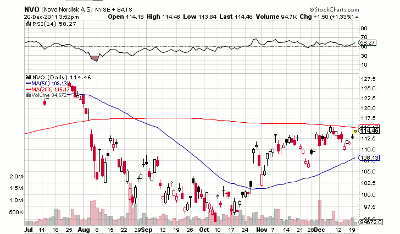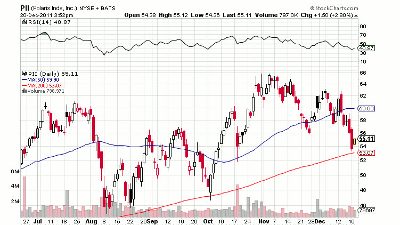These names show increases in dividend payments and cash flow, as well as yearly earnings and revenue. While some of their charts indicate stocks that have taken a beating, these could be watch list candidates for 2012, writes MoneyShow.com contributor Kate Stalter.
In the market chop of 2011, many investors—even some who generally prefer more growth—have turned to dividend payers to add some stability to their portfolios.
Some fundamental metrics that professional advisors use include growing cash flow, dividends, and estimates for rising sales and earnings. I ran a screen for exactly those parameters, and found seven stocks meeting those criteria.
Regardless of fundamental strength, I always rely on charts to time buys and sells. Not all of these stocks have charts that appear ready for prime time, but all could go on a watch list, based on some underlying fundamental potential.
Ametek (AME) is a Pennsylvania-based midcap that makes electrical power gear. One of the first criteria I watch for when tracking a stock is its chart. Ametek, like many other stocks, has struggled this year after retreating from an April high.
Its ten-week line is poised to cross higher than its 40-week, which could be a bullish signal, but it’s far from a technical buy point at this moment.
The company paid out dividends totaling 18 cents a share in 2010, up from 16 cents in 2009.
Two stocks from the semiconductor sector landed on my fundamental screen. KLA-Tencor (KLAC) and Xilinx (XLNX) are quite different animals, however, when it comes to their technicals.
KLA-Tencor is forming a constructive handle pattern along its ten-week average, after rebounding from a September low of $33.20. Watch for it to clear resistance above $49.39 in heavy volume.
While the dividend and operating cash flow metrics for this company remain strong, sales and earnings growth have been slowing. Wall Street sees earnings growth bouncing back to 23% in 2013.
Xilinx, meanwhile, broke down after a rally attempt and is working on its second month in a row of losses. Its current consolidation may ultimately turn out to be constructive, as its low undercut the trough of the previous base, back in June.
|pagebreak|Xilinx has suffered a sales and earnings slowdown, but analysts expect profit to begin growing again, to $1.97 per share in 2012, up from this year’s expected $1.79. Here, too, dividends and operating cash flow have been increasing, fundamental metrics that could bode well for future share price increases.
From the world of financials is a familiar name, Moody’s (MCO). The bond rater has been in the news lately mostly for downgrades of European bank and government debt, but the stock itself has some intriguing attributes.
Operating cash flow and dividends have been on the upswing, although earnings and sales growth both dropped to single-digit rates in the most recent quarter. Wall Street expects profit to grow just 5% in 2012, to $2.62 per share.
Moody’s chart is not showing a stock that’s ready to take off. Since late October, its price has been mired in a range between $31.41 and $37.15, and remains well below its 52-week high of $41.93, reached in May. Technically, the stock has a lot of work to do before it is back in buyable territory.
Another financial-sector name that’s been growing cash flow and dividends is Calamos Asset Management (CLMS), which provides investment research and runs a number of mutual funds and closed-end funds, as well as separately managed accounts.
The company is expected to see earnings slowdowns this year and next, although dividends rose again after taking a dive in 2009, perhaps not surprisingly. Operating cash flow has increased in the past two years.
Calamos’ chart is not as strong as that of some industry peers, such as Epoch Holding Corp. (EPHC) or Virtus Investment Partners (VRTS).
Because of the expected earnings slowdown and the mediocre chart, I’m not yet a fan of putting Calamos on a short-term list of buy candidates. However, its dividend yield of 2.9% could be a mitigating factor for investors seeking income.
While small pharmaceuticals, such as Questcor (QCOR) and Akorn (AKRX) have been price leaders in recent weeks, their larger cousins have not fared as well, when it comes to the technicals.
A name that showed up on my fundamental screen was Denmark’s Novo Nordisk (NVO), maker of diabetes and hormone-replacement treatments. This is another example of a stock whose current price consolidation fell below the previous basing area. That type of action often flushes out investors lacking in conviction, opening the door for bargain-hunters to scoop up shares.
|pagebreak|So far, that hasn’t happened, but market volatility and general nervousness about anything European may be scaring off buyers at the moment. Analysts have solid growth estimates for Novo Nordisk earnings, pegging income at $5.44 a share this year and $6.23 in 2012. Those would be increases of 25% and 15%, respectively.
Other fundamental metrics indicate strength: Operating margin increased in the past three years, operating cash flow was up in the past four years, and dividends rose for the past two years. The fundamental story appears intact, but the chart shows there is some ground to make up on the technical side.
Finally, one of 2011’s price growth leaders found its way onto my fundamental screen. Polaris (PII), maker of snowmobiles, golf carts, and other recreational vehicles, is up 40% year-to-date. Like many other companies of its size, the mid-cap has shown some volatile trade, commensurate with the general market.
The stock skidded 4.4% Monday as the major indices sold off, but it found support at its 200-day moving average.
Polaris has increased its dividend each year since at least 2002. Operating cash flow has risen in the past two years, as have operating margins.
Wall Street expects 2011 to wrap up with earnings of $3.18 per share, a gain of 49% over last year. For 2012, earnings are seen coming in at $3.79 a share, up another 19%.
The stock is not buyable at the moment, and could be in the process of forming another base. As with several other stocks mentioned here, Polaris formed a bullish consolidation over the summer, undercutting the low of earlier bases. From there, it rallied to an all-time high of $65.86 on October 31.
Despite Tuesday’s big gains on major indices, the market situation remains precarious. Plenty of times in 2011, we’ve seen huge price advances followed soon after by equal or bigger declines. The stocks discussed here are potential watch list candidates, but any buys in this current market environment should still be considered risky.
At the time of publication, Kate Stalter did not own positions in any of the stocks mentioned in this column.

